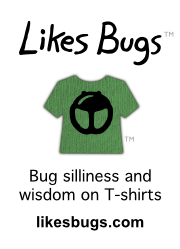I met arachnologist Hank Guarisco at the web at midnight — literally — on the night of September 29th in Lake Tawakoni State Park. We would stay for a few days to study the web. Hank counted and measured, while I photographed and filmed. There is a heck of a lot to share from this multi-day adventure, but I’m saving much of that for later. This post is about what happened on Monday.
On Monday October 1st I was in my little camper checking email on my cell phone. Mike Quinn had sent an email titled, “Large Spider Web on *north* side of Lake Tawakoni.” Lake Tawakoni State Park, where we were, was on the south side. The new web was being reported at Wind Point Park, which is a privately owned park. Pam Rousseau, an employee of the park, reported, “The web seems to be getting bigger every day and is now crossing one of the park roads,” and she was seeing the same spiders that were being photographed at Lake Tawakoni State Park.
Woohoo! I got in my car and drove up to Hank’s camp site. He immediately hopped in and off we went.
As we drove through Wind Point Park, Hank excitedly observed that trees throughout the park were loaded with the webs of the social cobweb spider Anelosimus studiosus. They weren’t as conspicuous as the sheet webs of the long-jawed orbweavers, but it was easy to see that they densely occupied even the tallest of trees. Still, passers-by might not even notice them—and they weren’t even the reason why we were called. Heck, before Hank pointed them out, I hardly noticed them or thought much of them.
The long-jawed spiders made themselves known. We pulled up to 30- or 40-foot trees that looked like cotton candy sticks. Several trees were completely engulfed, and the web was slowly taking over adjacent trees. Have a look:
So we had a second site. How many more would there be? Were they only around Lake Tawakoni? Interestingly, the web at Lake Tawakoni State Park was on a point that jutted into the lake, and so was the web at Wind Point Park. And at dawn the midges came in off the lake to feed themselves to the spiders. Midges are little flies that look like mosquitos to most people, but they don’t bite.
I went out onto a pier at 8pm that night to watch the midges swarm. There was a light on the pier, a perfect place to film the midges. They formed a dense cloud around the light, and I set my video camera up in the middle of it. Here’s the video. That constant white noise in the background is the hum of millions of midges.
Now imagine me standing by the camera with my fingers in my ears for ten minutes. The minute I removed my fingers, midges would crawl into my ears. What’s this thing with midges and ears?
The video hardly captures the sense of drowning in midges. I rank this as one of the most thrilling experiences of my life. The air was thick with them like fog, and they hummed like sound of a droning rain. Anyone who stood there and thought they were mosquitoes would now be recovering in a psycho ward.



